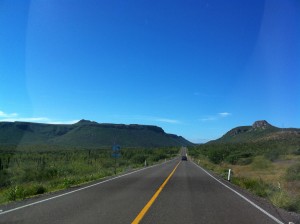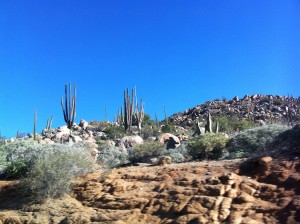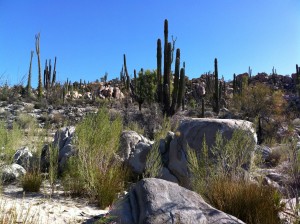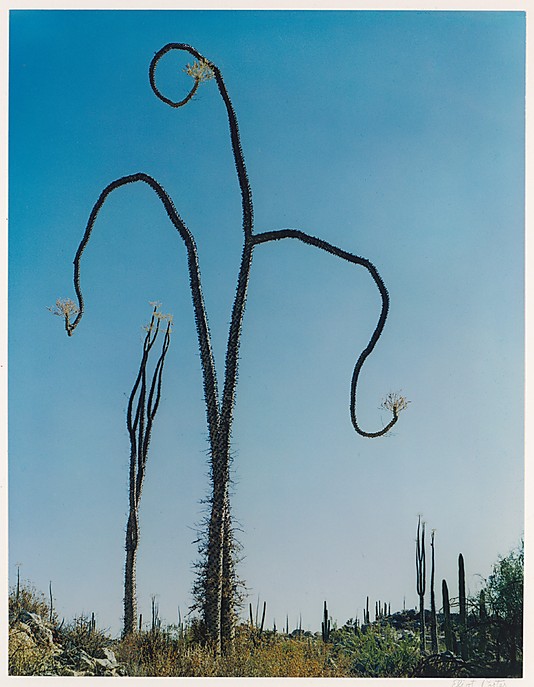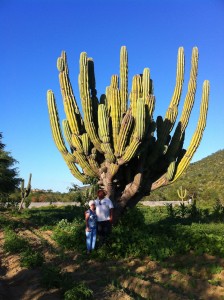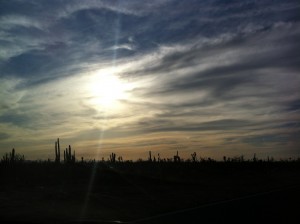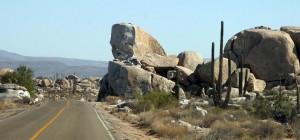Two and one half years ago when we were driving south on the Baja to Cabo, we came upon a terrible accident about an hour north of Guerrero Negro. Our first warning of what was ahead was the flashing of hazard lights on two semi-trailer trucks that were fully blocking the road. They were protecting an older model SUV that had obviously rolled but was back sitting upright on its wheels.
There were three other passenger vehicles stopped and pulled off in the field beside the highway: two Mexican and one American from Arizona. We got out to see if we could help and the couple from Arizona, Joe and Andrea, were doing what they could to assist. Joe had a very large chocolate Labrador dog in his care, rescued from the accident, and Andrea, a retired emergency nurse, was attending to the elderly gentleman trapped in the car.
Andrea had dressed Jerry’s head wound and was trying to assess the extent of his injuries, but was having a difficult time understanding him. Turns out that Jerry had emigrated from Czechoslovakia as a young man to western Canada to carve and create a new life. His accent was still very strong, despite the fact he was ninety years-old and had lived in Canada most of his life. The shock of the accident had him speaking in his native language, so it was no wonder that Andrea was having difficulty understanding him.
We were far from medical help, but the Mexican people who had stopped committed to calling an ambulance as soon as they had service on their cell phones. We were completely out of range and in the middle of nowhere.
Andrea asked if I could try to communicate with Jerry, who was from my home province of Alberta. Jerry wanted us to move the steering wheel and help him sit up, but we were afraid to move him in case there was spinal damage. All we could do was make him more comfortable until an ambulance arrived, so I held his hands and tried to get some information from him so that we could contact loved ones back home. Gradually, Jerry started to speak broken Spanish combined with English, so we were able to get his son’s information.
It took a few hours, but the ambulance finally arrived and we were able to communicate that Jerry needed to be moved carefully and that they use a back board to move him. The four of us followed the ambulance into Guerrero Negro to ensure that he received proper care and to try to communicate what we new about Jerry.
Once we had contacted Jerry’s son in Calgary, Alberta and were comfortable that Jerry was receiving proper care, our next order of business was to check into a hotel and give Caesar, Jerry’s ten year-old Lab, a long overdue bath. Ron called him “basic cable” – not neutered, never disciplined and not very bright – no extra channels, in other words. He was a sweet old boy, however, and did his best to be good – he just didn’t know any better when he wasn’t. Take, for example, when we took him for a walk to the hospital to see old Jerry. Minding our own business and walking by some stores on the main street of Guerrero Negro, Ron turned his head for just a moment and Caesar proceeded to pee all over the stack of cowboy boots they had on display. Needless to say, the store owner wanted us to pay for all of the boots and boxes Caesar had “watered”, but we pretended not to understand him and quickly fled down the street.
The hospital, company-owned by Mitsubishi, wanted us to take Jerry home the next day. We refused as we were concerned about something happening to Jerry in transit. We strongly encouraged Jerry’s son to come down to take care of his Dad or, at the very least, make arrangements to have an ambulance take Jerry to San José del Cabo. We loaded up Caesar and with concern and heavy hearts, we were back on the road to Cabo. We had done all we could do.
A very kind woman, who happened to be in the hospital and overheard that they were kicking Jerry out, offered to take him in to her home to convalesce. Just when it appeared Jerry was getting stronger, he collapsed and died of an apparent heart attack. We were so sad to learn of his passing.
Jerry’s property manager and friend, Mariana, found Caesar a new home in San José del Cabo. We understand that he ran away a few months later and was never located. The old boys were inseparable and perhaps Caesar left in search of his friend, Jerry. We hope he found him – perhaps there’s another road trip in their future together.




